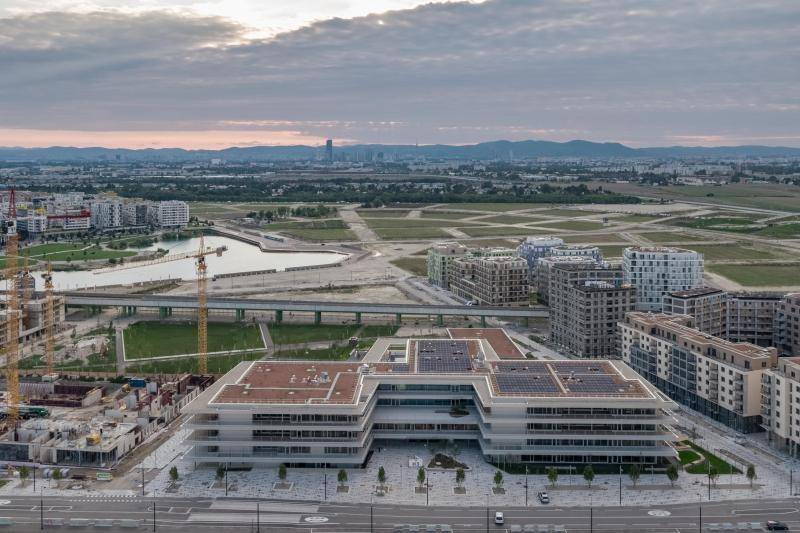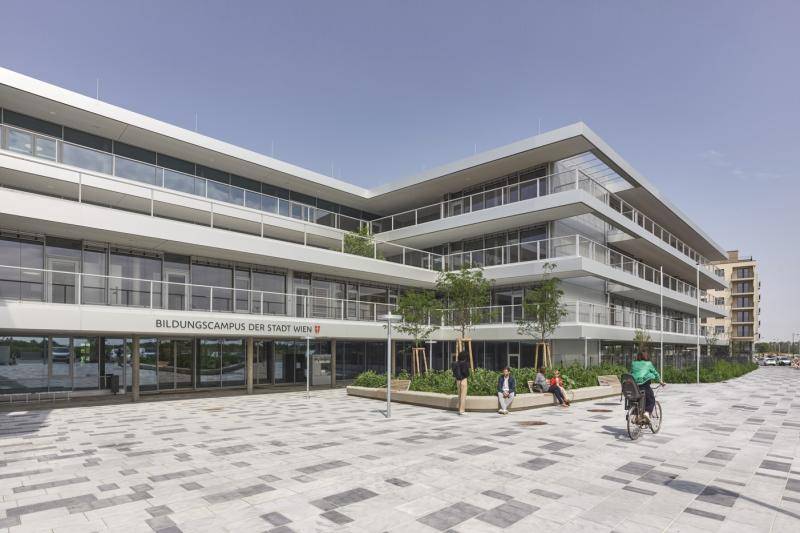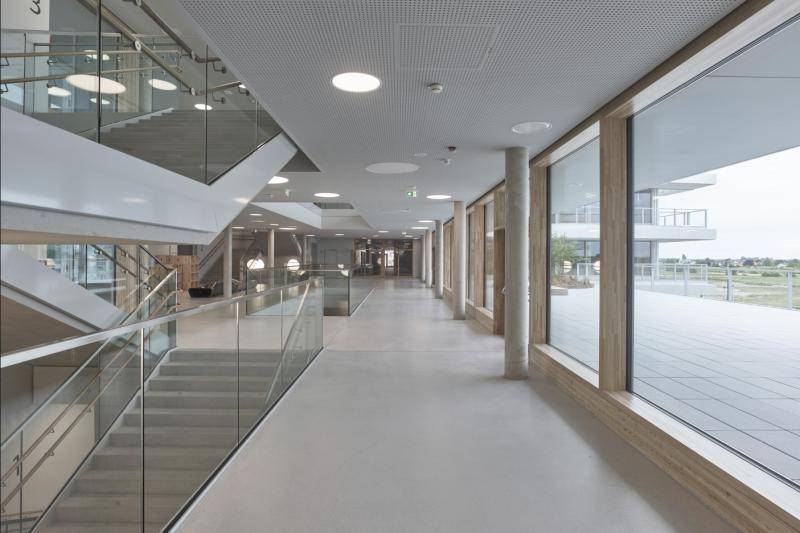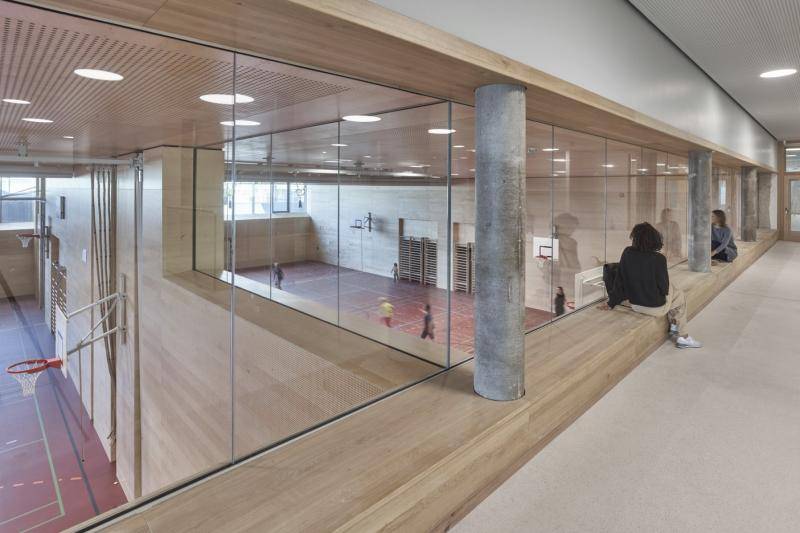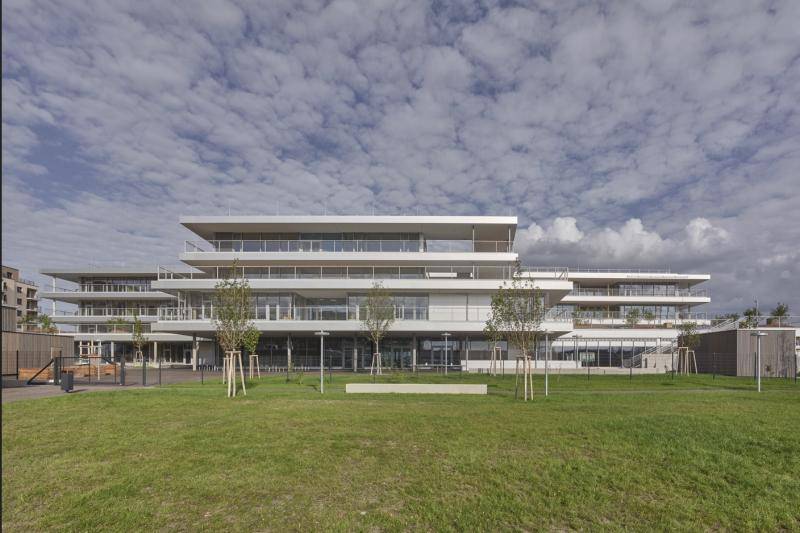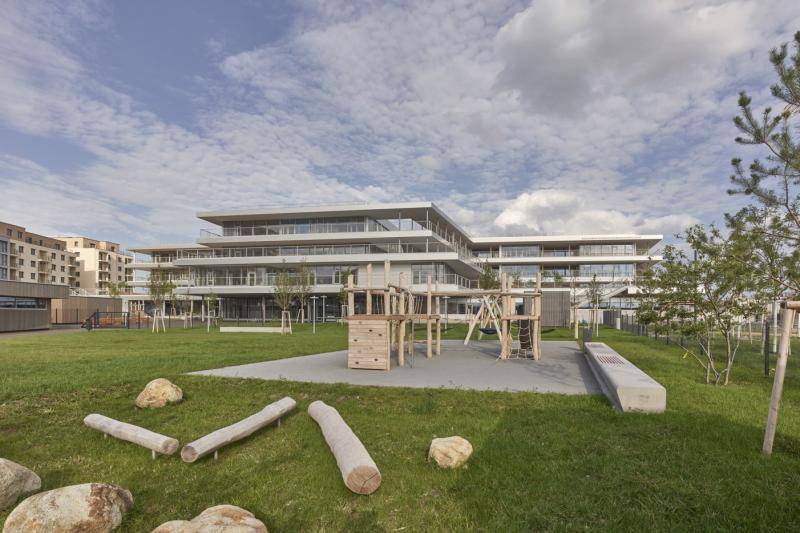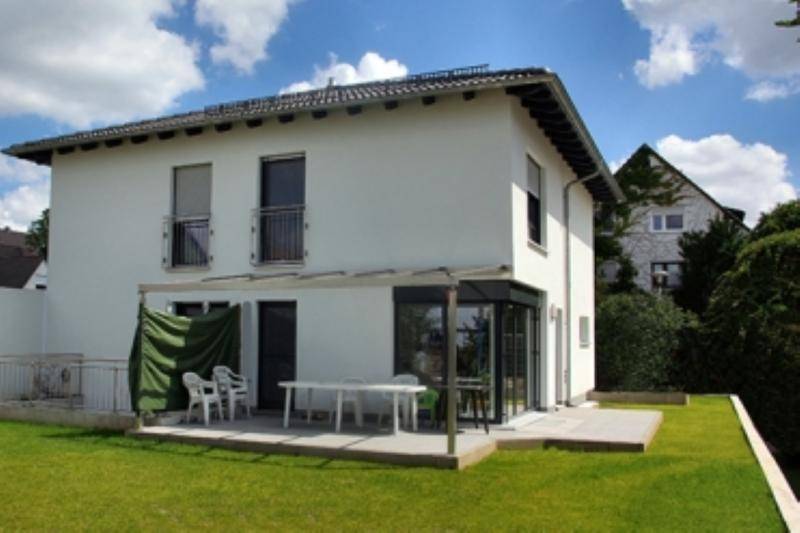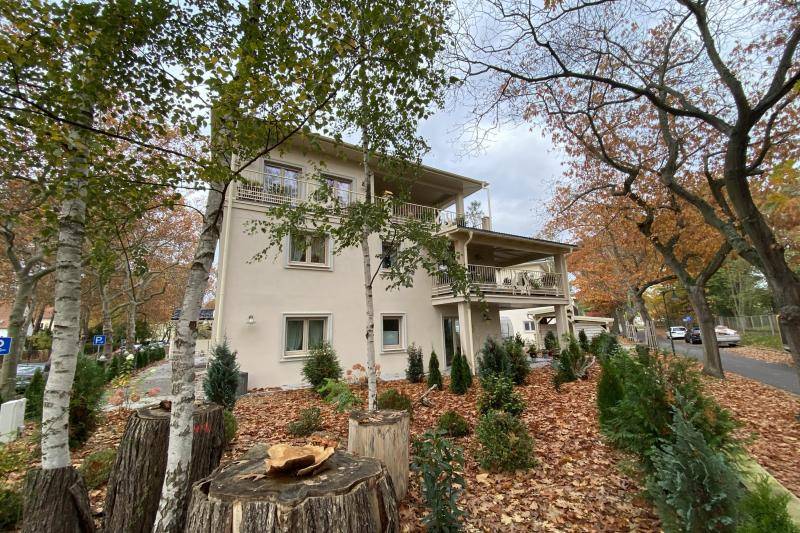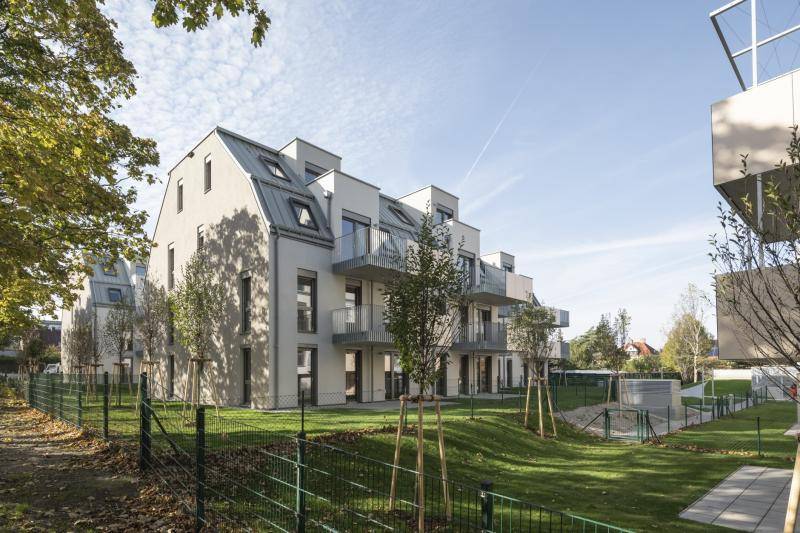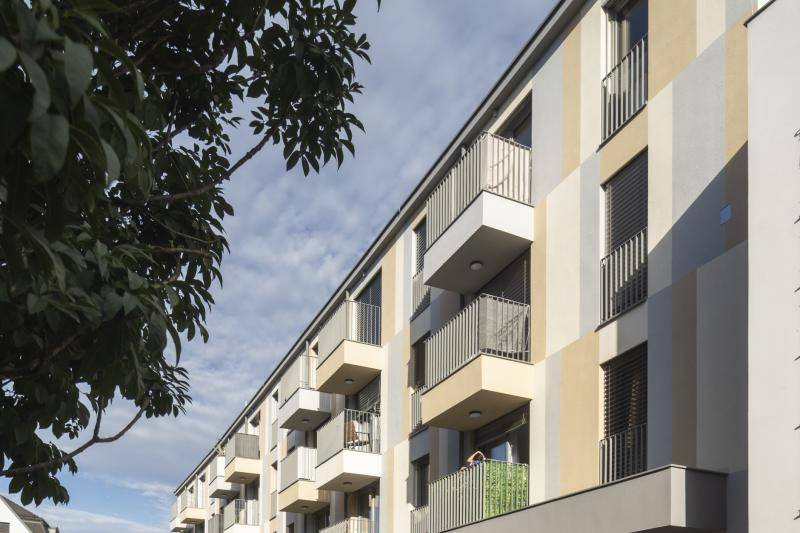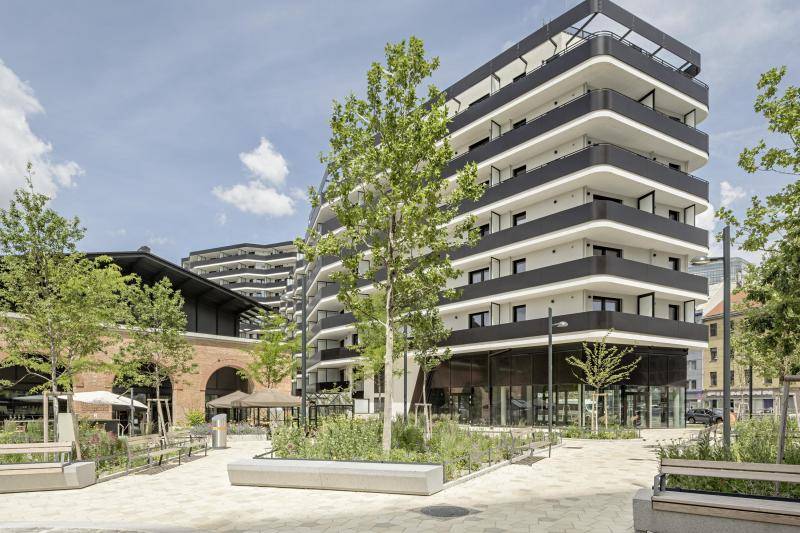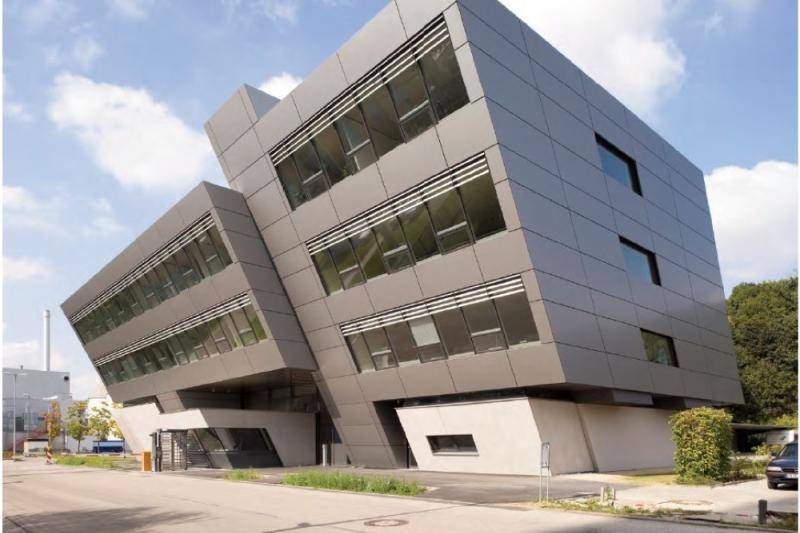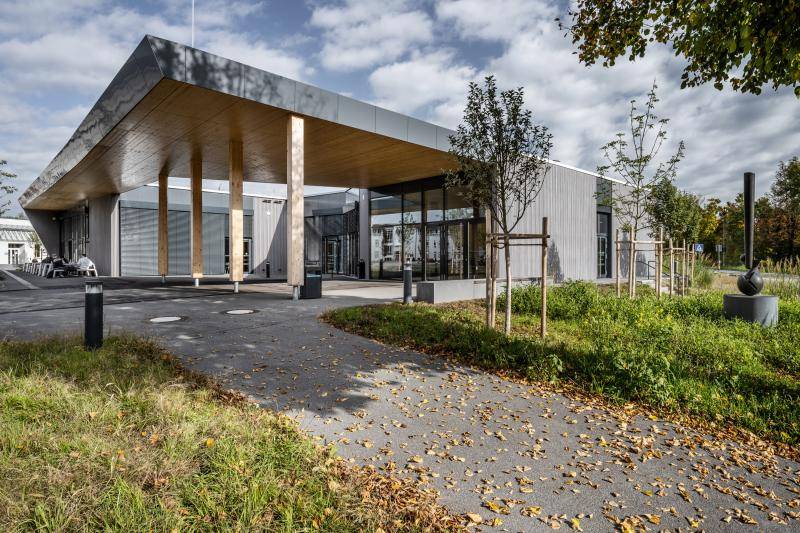Bildungscampus Liselotte-Hansen-Schmidt
With the Liselotte Hansen Schmidt Campus in the north of the Urban Lakeside Aspern, which opened in 2021, the City of Vienna has succeeded in creating a forward-looking project - the building scores highly in terms of both ecological and social sustainability and sets the bar high for school construction.
City of Vienna - MA 19 Architektur und Stadtgestaltung & MA 34 Bau- und Gebäudemanagement
2021
Siemens Gebäudemanagement & Services GmbH
19.974 m²
19,81 kWh/m²a
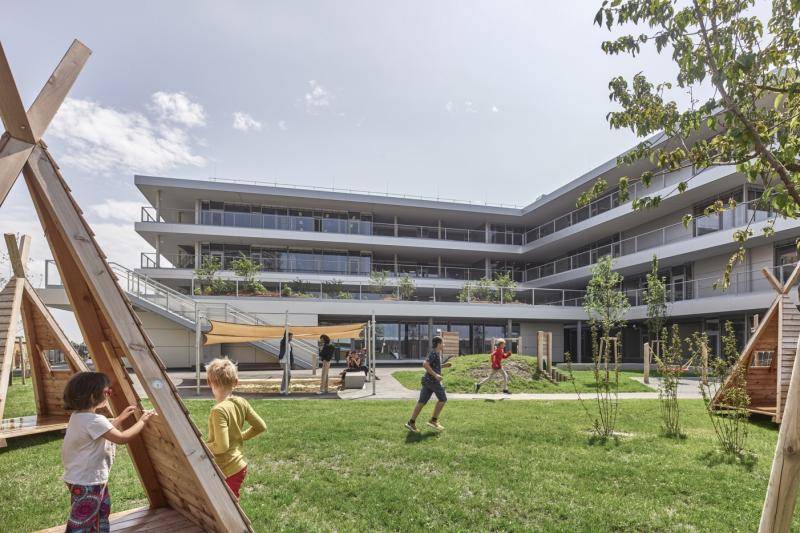
The open design of the area blurs the boundaries between school and public space - which is also intentional. After all, the outdoor area, designed for all age groups, can be used for the most part by everyone, including residents or visitors to the Urban Lakeside.
Despite a warm day, the building is pleasantly cool, well tempered. This is made possible by the energy mix that was implemented here according to Harald Kuster's concept: Passive House building envelope, heat pumps, over 70 geothermal probes, solar power and ventilation with highly efficient heat recovery. Using geothermal energy in conjunction with thermal component activation of the intermediate ceilings, the building can be heated and cooled cost-effectively and efficiently. Cooling and heating is provided from the ceiling.
Plants on the facade support the round-the-clock feel-good climate. Heat is provided by the heat pump, which is fed with solar energy from the building roof. The earth under the building serves as an energy source for heating in winter. In summer, free cooling can be used to cool the building in a highly efficient way, almost free of charge and without CO2 emissions. In the process, the excess building heat is simply dissipated into the ground. Thermal activation of the heavy building masses turns the entire educational campus into a heat reservoir.
Thanks to the highly insulated and airtight envelope and the high storage mass, the building can keep its temperature constant even if no renewable application is possible for several days (e.g. photovoltaics in winter). This allows the building to be optimally supplied with volatile renewable energy. Due to the high on-site energy supply, the building incurs very low ongoing energy costs. The educational campus is thus largely self-sufficient in terms of energy and relies exclusively on renewable energy sources.
(Text: Gisela Gary; Z+B magazine; in shortened form)
